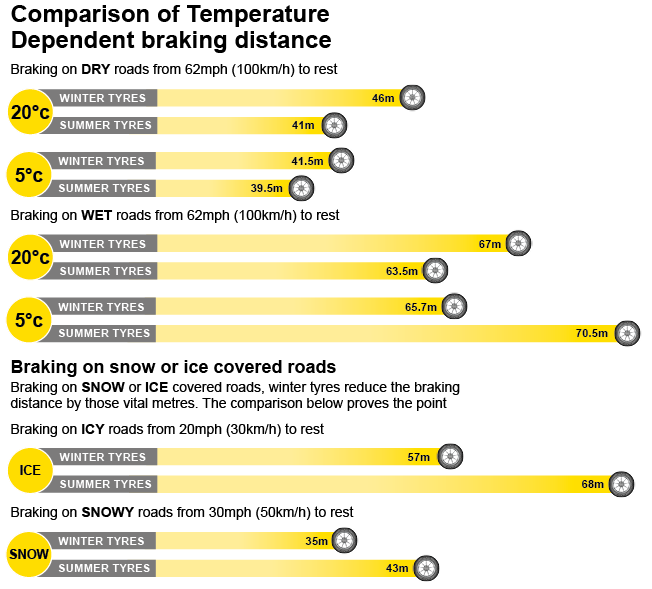
Company recalls more than 541,000 winter tires over lack of traction in snow
Owner notification letters should be mailed out by February 1, 2025.
Follow along with the video below to see how to install our site as a web app on your home screen.
Note: This feature may not be available in some browsers.

Cross from Windsor into Detroit and you go from an 80 kph limit that's strictly enforced to a rarely enforced 110, with traffic averaging 140 in the city at rush hour.Also, where do I go right across the border in the USA to find 200kph speed limits?
Tires used to be a lot less specialized than they are today. I had a '79 Mustang that I drove all over the north east on a set of Goodyear Eagle GT tires. Went to nearly every ski area in VT and NH on the snowiest days and commuted on the slushiest and/or coldest days and drove the wheels off it in the summer. That was not known for being a good car in the snow but all I ever did was throw a 100 pounds of sand in the back to improve the weight distribution slightly. Did the same thing with an '85 RX7 GSL-SE on factory Pirelli P6 tires.Traction of tires is spooky.
Cold snow?
Wet snow?
Cold wet roads?
Cold dry roads?
Warm wet roads?
Warm dry roads?
There is no tire out there that is good on more than 3 of those.
I think the all weather tires use a compromise rubber formulation, so while they're likely OK for occasional snow and ice, extended freezing conditions likely compromise their traction, because the rubber will tend to be too stiff for the conditions.running some all-weather tires (Michelin CrossClimate2) year round, since they're supposed to be pretty good at everything.
This must be an East Coast thing; semis in California seem to now think that the entire width of the freeway is fair game, even if they are only driving 1 mph faster than the truck in front of them. I was just driving down CA 57, and semis took up 3 of the 4 southbound lanes, because 1 mph difference is money, I guess. And, since they're not paying any heed to the 55 mph speed limit for semis, they no longer bother yielding on merges, since that would require them the use their precious brakes to slow down their excessively fast mass.Stateside most semis are driven very defensively/cautiously
Cross from Windsor into Detroit and you go from an 80 kph limit that's strictly enforced to a rarely enforced 110, with traffic averaging 140 in the city at rush hour.

Barrie is located north of Toronto, south of Georgian Bay. It is located in Ontario's snow belt, and it is where lots of Torontonians go to ski. It snows way more there than it does here.Relevant editorial.

COLUMN: It's time for Ontario to mandate winter tires
Relying on road salt to pave way for safe conditions isn't sustainable, columnist sayswww.barrietoday.com
It actually matters quite a lot.Who cares if the road is -20*C or -2*C or 0.5*C
100%.It actually matters quite a lot.
If there's a water film between tire and ice it's a lot more slippery.
Sun, contact pressure and heat from the tire can all contribute to a water film, but at some point there isn't enough heat to let the film happen.
https://www.pirelli.com/tyres/en-gb...ps/seasons/difference-summer-and-winter-tyresStopping distances for winter vs summer tyres
Using winter and summer tyres in different seasons always ensures optimal stopping distances whatever the time of year. If you use summer tyres in the winter, when temperatures fall below 7°C, stopping distances may be as much as twice those of winter tyres, especially on wet roads.
If ice or snow is present, stopping distances may even reach eight or 10 times those of winter tyres, resulting in significant risks for road users. The same applies to winter tyres used in the summer, when the softer compound under performs and reduces the structural rigidity of the tyre, considerably increasing stopping distances.
When temperatures fall to 0°C during the winter, a car fitted with winter tyres can be stopped at a speed of 30mph within about 35 metres, whereas this distance could be as much as 45 metres on summer tyres. The presence of ice further widens this gap, making the benefits of using the right tyres for the right season even clearer.
This is where studs - long studs - are really helpful.The snow/packed snow/ice that forms almost always has a film of water atop it, and the result is slicker than snot on teflon.
